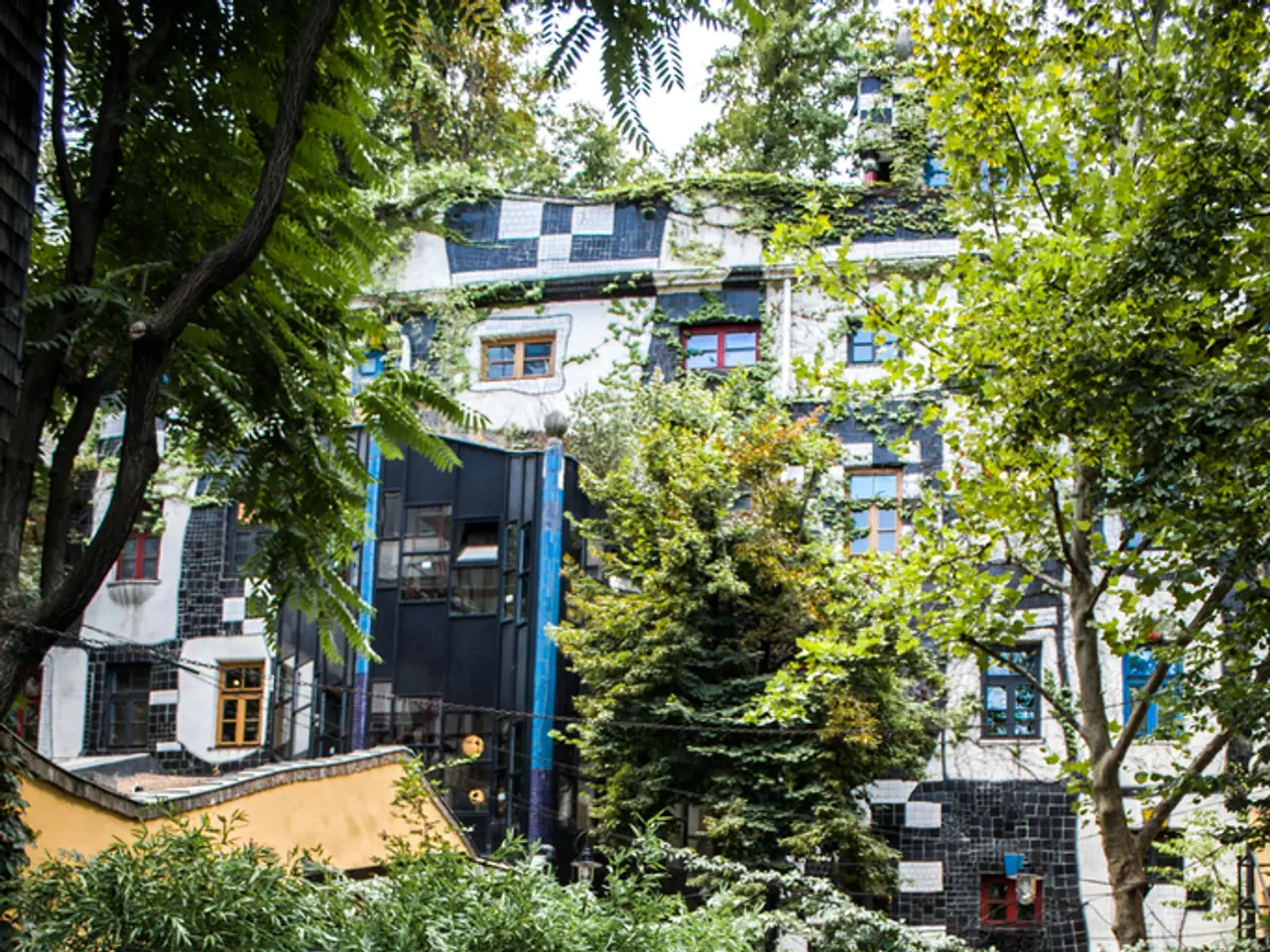In the face of sweltering heat, India explores age-old and innovative strategies to combat the summer swelter
In response to the rising temperatures and energy consumption caused by air conditioning in India's hot climate, passive cooling solutions are proving to be an effective and sustainable alternative. These solutions, designed to reduce the need for active cooling systems, are being implemented across the country, particularly in urban areas.
**Effectiveness of Passive Cooling Solutions**
Passive cooling strategies, such as cool roofs, proper building orientation, shading, cross-ventilation, and the use of natural materials, can significantly reduce the demand for space cooling and indoor temperatures. For instance, cool roofs, which use reflective paints, light-colored coatings, or tiles to reflect sunlight and emit heat efficiently, have shown promising results in cities like Ahmedabad, Bangalore, Delhi, and Jodhpur.
**Examples of Passive Cooling Solutions**
Cities are adopting various passive cooling solutions. Cool roof technologies, for example, have been successfully implemented in several cities, resulting in a reduction in heat gain and energy consumption. Urban greenery initiatives, such as afforestation and urban parks, provide shade and leverage evapotranspiration to cool urban areas naturally. Traditional practices like blue walling in Jodhpur and Ahmedabad are also being revived to help cool buildings.
**National Policies and Initiatives**
The Indian government is taking steps to promote sustainable cooling methods. The Telangana’s Cool Roof Policy (2023–2028) mandates the use of cool roofs in new government, institutional, and large commercial buildings, as well as residential plots above 600 square yards. The Pradhan Mantri Awas Yojana-Urban (PMAY-U) encourages energy-efficient housing by integrating passive cooling solutions like reflective surfaces into affordable homes.
The India Cooling Action Plan provides a national framework for cooling strategies, including green building incentives and heat-resilient urban planning. The Eco Niwas Samhita (ENS) offers guidelines for eco-friendly building design, often incorporating passive cooling measures.
**International Collaboration**
The United Nations Environment Programme (UNEP) is supporting various initiatives aimed at reducing heat in Indian cities. For instance, the UNEP-led Cool Coalition is installing a "cool roof" on the Kashmere Gate interstate bus terminal in Delhi, covering nearly 150,000 square feet and reflecting at least 80% of solar heat. The goal is to help cool upwards of 100,000 commuters daily and protect the city's most vulnerable residents from heat waves.
In Chennai, a major industrial hub, UNEP has mapped the hottest areas and provided recommendations on how to use nature and passive cooling to bring down temperatures. The recommendations, when integrated into Chennai's master plan, can reduce urban heat by up to 4°C and cut heat-caused illnesses by 15-30 per cent. UNEP is also partnering with several agencies in the state of Tamil Nadu to develop financing mechanisms for integrating passive cooling into government-supplied social housing.
**Future Outlook**
Balakrishna Pisupati, who leads the UNEP's India office, stated that temperature extremes are expected to persist in the future. To address this, UNEP is advising authorities as they develop guidelines for using disaster-related funding on projects that reduce temperatures in urban areas, including through passive cooling. The effort to reduce heat in Chennai is supported by several organisations, including the Swiss Agency for Development and Cooperation, the Government of Denmark, the Clean Cooling Collaborative Initiative, and the World Bank.
India's commitment to passive cooling solutions is evident in its integration into national policies and city planning. As the country grapples with rising temperatures, these sustainable strategies offer a promising path towards energy efficiency and climate resilience.
- The use of cool roofs, a passive cooling strategy, can lead to significant reductions in heat gain and energy consumption, as demonstrated in cities like Ahmedabad, Bangalore, Delhi, and Jodhpur.
- Mental health and well-being may also benefit from passive cooling solutions, as reducing indoor temperatures can help improve quality of life and productivity for city dwellers, especially during hot periods.
- The Indian government's support for eco-friendly building design and energy-efficient urban planning, such as the Eco Niwas Samhita and Pradhan Mantri Awas Yojana-Urban, can contribute to reducing carbon emissions and mitigate the effects of climate change on the environment.
- Collaboration between Indian authorities and international organizations, like the United Nations Environment Programme, helps finance and implement passive cooling solutions that combat climate change, protect human health, and promote the overall well-being of urban populations.




